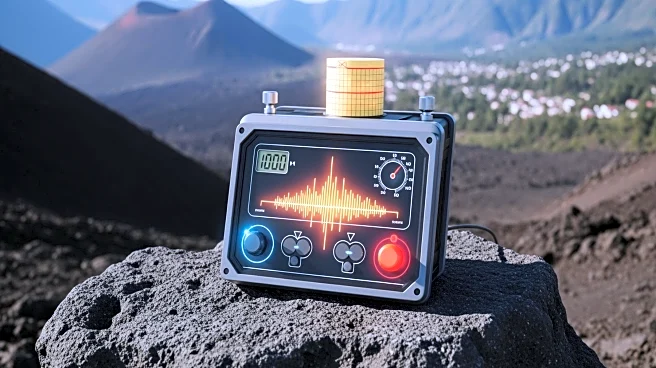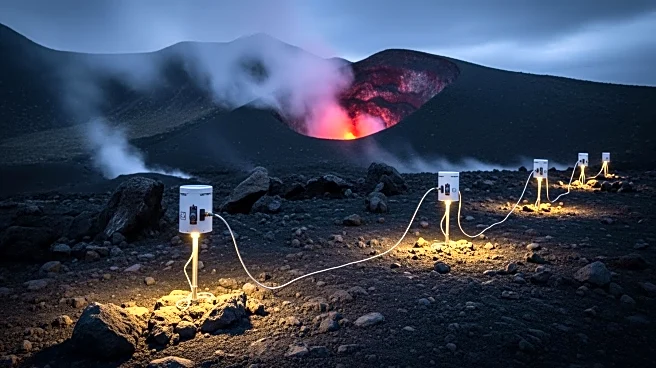What's Happening?
Researchers at Italy's National Institute of Geophysics and Volcanology have discovered a new method to predict volcanic eruptions at Mount Etna, Europe's largest active volcano. By studying the 'b value'
within the Earth's crust, which measures the ratio of low- to high-magnitude earthquakes, scientists can monitor crustal stress changes and track magma movement. This method allows for the detection of magma as it ascends from deep within the crust to the summit of the volcano. The study, published in Science, found a strong correlation between volcanic activity and the b value, suggesting that monitoring these variations can provide early warnings of potential eruptions. This discovery is significant for the safety of approximately one million people living on the slopes of Mount Etna, as it could offer months of advance notice before a major eruption.
Why It's Important?
The ability to predict volcanic eruptions at Mount Etna is crucial for the safety and preparedness of the surrounding communities. With about one million residents living near the volcano, early warnings can significantly reduce the risk of casualties and property damage. The new method enhances the ability to anticipate volcanic crises, potentially allowing for timely evacuations and other safety measures. This advancement in volcanic monitoring not only improves local disaster preparedness but also contributes to the broader field of volcanology, offering insights that could be applied to other active volcanoes worldwide. The research underscores the importance of scientific innovation in mitigating natural disaster risks and protecting human lives.
What's Next?
The implementation of this predictive method could lead to improved monitoring systems at Mount Etna and other volcanoes globally. Researchers may continue to refine the statistical models and explore additional parameters that could enhance eruption predictions. Local authorities in Sicily might integrate these findings into their emergency response plans, ensuring that communities are better prepared for potential volcanic activity. Furthermore, international collaboration could be fostered to share knowledge and techniques, improving volcanic monitoring and safety measures worldwide.
Beyond the Headlines
This development highlights the intersection of science and public safety, emphasizing the role of research in disaster risk reduction. The ethical implications of such advancements include the responsibility to communicate risks effectively to the public and ensure that vulnerable populations are adequately protected. Additionally, the cultural significance of Mount Etna, with its long history of eruptions, adds a layer of complexity to the management of volcanic risks, balancing scientific progress with respect for local traditions and heritage.











